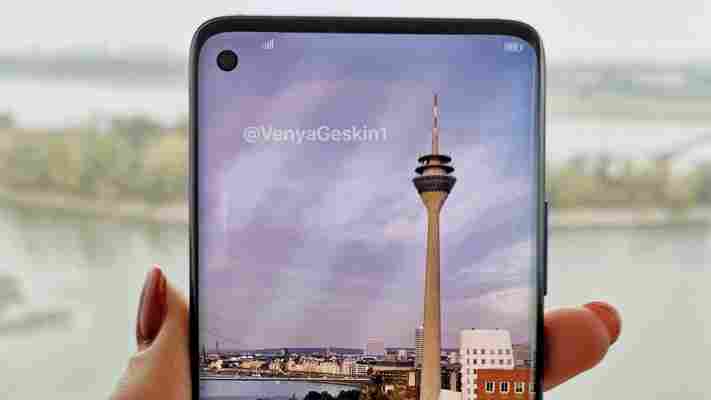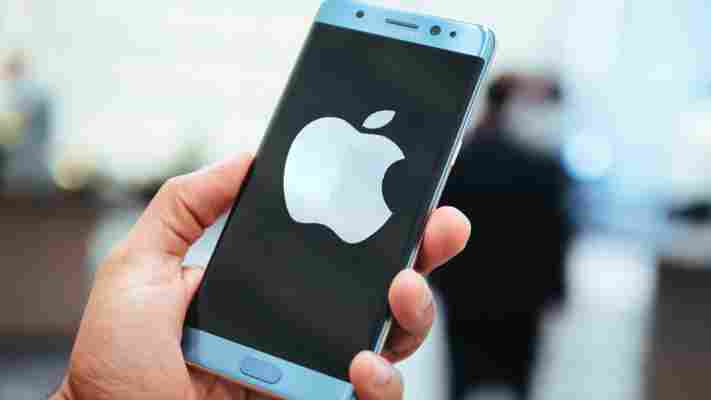Samsung’s Galaxy S10 will reportedly get a huge 6.7-inch screen and 6 cameras
Just as Apple introduced a radically new design for the 10th anniversary of the iPhone , Samsung is reportedly looking to make a splash with its 10th Galaxy S flagship phone. According to the Wall Street Journal , a variant of the upcoming Galaxy S10, internally known as “Beyond X”, will have a massive 6.7-inch screen, six cameras, and 5G support.

The report also noted that the Korean tech giant will introduce three other variants of the Galaxy S10, with screens ranging between 5.8 inches and 6.4 inches. These variants are separate from the 5G-capable Beyond X. These three variants are internally known as “Beyond 0”, “Beyond 1”, and “Beyond 2,” and they’ll sport between three and five cameras each.
The device is likely to be launched in February next year . In addition to these four devices, Samsung is also working on a foldable phone that’s expected to launch in March – a month after the S10 models.
Currently, the Galaxy Note9 houses Samsung’s biggest phone screen at 6.4 inches. Next year’s Galaxy S10 is said to be larger by a bit, at 6.7 inches. The company recently announced at its developer conference that it will introduce different types of notches in its screens for it to allow for a larger display area. That leads me to believe that it’ll go with notches for some of the variants of the S10.
I’m also interested to see what Samsung’s six-camera setup will look like. The only other reference point we have for that is from last month, when Huawei’s Honor sub-brand introduced its Magic 2 with six cameras – three on the rear and three on the front.
The WSJ report suggests that the 5G variant will launch only in the US and South Korea. But it’s worth noting that Samsung’s latest Exynos 9820 mobile processor isn’t 5G-ready, so the company will likely need to use a Qualcomm chipset to enable support for the new network standard on that model.
Samsung is betting big on this phone, and expects it to do well to shore up its declining smartphone business . All hands on deck.
There are now Pokemon Go-themed sex toys, oh god, oh god, oh god
Any hot pop culture item is bound to end up with its own sexual parody; while we haven’t yet heard of a Pokemon Go porn (it probably exists, but I’ve not dared Google it), we can confirm that there are now PoGo-themed sex toys called Pokemoan . And they will ruin your childhood.

The toys come in four different shapes that represent the original starter Pokemon, each with names like “Bulby,” Charmy,” “Squirty,” and “Piky.” The last one in particular is shaped like tail in case you’re into that kind of role-playing in the bedroom.
Gives a bit of a new meaning to, “You teach me and I’ll teach you,” doesn’t it?
Depending on which you buy, they range from $50 to, heh, $69. Probably best to keep these away from poor Professor Oak, though Professor Willow might have something different to say about them.
Future iPhones may have new displays even better than OLED
All current reports to indicate that the flagship 2017 iPhone will include a curved OLED panel. But new rumors indicate that Apple isn’t planning on staying with the technology for long. Instead, it’s likely to move on to a fancier technology called microLED .

Wang Jyh-chau, CEO of LCD maker Innolux, notes that “OLED cannot replace LCD in terms of performance-cost ratio and reliability,” and that while OLED makes sense for the 2017 iPhone, Apple likely won’t want to hold on to the technology for long – especially given Samsung might have difficulty manufacturing OLED screens for both Apple and its own products.
Of course, it seems fishy that the head of an LCD company would point out the problems with OLED, but there’s previous evidence to suggest Apple is planning on moving beyond OLED soon.
Apple bought micro-LED company LuxVue over two years ago, and reportedly opened a secret micro-LED facility in Taiwan last year to develop its future displays. MicroLED combines many of the advantages of the different display technologies, including the pure blacks and faster refresh rates of OLED, along with the (usually) better longevity and brightness of LCD panels.
There are no commercial devices currently using microLED, but if Apple can make the tech cost-effective, you can bet it would rather use its own technology than copying its competitors.
Via MacRumors
